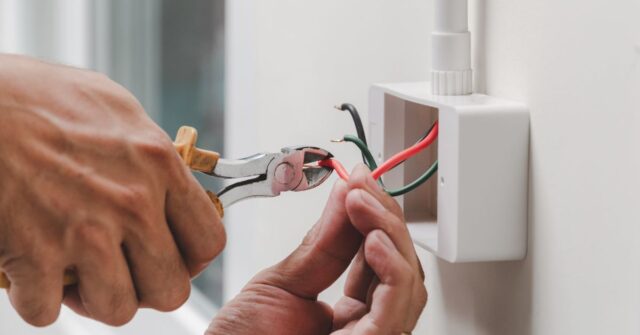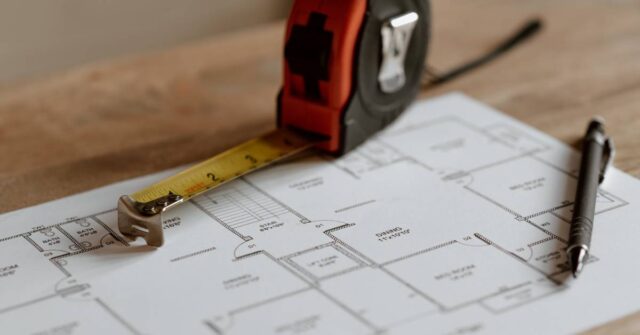For many Australian property owners in Sydney, a bathroom renovation can represent a fresh start or a valuable addition to their home. However, navigating the permit requirements can be daunting.
This comprehensive guide is designed to shed light on Sydney’s bathroom renovation permit requirements, ensuring that homeowners are well-informed and equipped to undertake their projects smoothly.
The Importance of Acquiring the Right Permits
Before diving into the specifics, it’s vital to understand why these permits matter so much.

Protecting Your Investment
Obtaining the right permits ensures that your renovation meets the local building standards, preserving the value of your property.
Properties without proper permits might not be covered by insurance, placing your investment at risk should any issues arise post-renovation.
Ensuring Safety and Quality
Permits are not just bureaucratic hurdles. They’re in place to ensure that renovations adhere to safety and quality standards.
This is particularly crucial for bathrooms where water damage and electrical mishaps can pose significant risks.
Avoiding Legal and Financial Repercussions
Without the correct permits, homeowners can face fines, legal issues, and the potential need to undo completed renovations.
Additionally, selling a home with unpermitted work can be challenging, often leading to reduced property value.
Types of Bathroom Renovations: Permit or No Permit?
Not every bathroom renovation requires a permit. It’s crucial to differentiate between minor and major overhauls to determine your needs.

Minor Renovations: Often Permit-Free
Many cosmetic changes don’t need a permit, allowing homeowners more flexibility.
Painting and Decorating
General aesthetic changes, like painting walls or updating decorations, typically don’t require permits. Always ensure you’re using appropriate materials for moist environments.
Replacing Fixtures
Swapping out sinks, faucets, or lighting fixtures won’t usually necessitate a permit. However, any substantial plumbing or electrical changes accompanying these replacements might.
Flooring Changes
Replacing tiles or installing new flooring materials might not require a permit unless it involves structural alterations. Still, always consult professionals to ensure waterproofing standards are met.
Major Renovations: When Permits Are Essential
When your renovation project delves deeper than surface-level changes, permits become a crucial consideration.

Structural Changes
If you’re looking to knock down walls, expand your bathroom’s footprint, or make other significant alterations to the room’s structure, you’ll definitely need a permit.
Plumbing and Electrical Modifications
Substantial changes to plumbing or electrical systems, such as relocating pipes or adding new circuits, require permits to ensure they’re up to code and safe.
Waterproofing
Waterproofing is essential in bathrooms to prevent water damage. In Sydney, any changes to or new installations of waterproofing systems require a permit to ensure the work is up to Australian standards.
The Step-by-Step Permit Process in Sydney
Understanding the permit process is key to a hassle-free renovation. Here’s a breakdown of the steps involved.
Consultation with a Design Professional
Before starting the permit process, it’s recommended to consult with an architect or interior designer.
They can help create plans that comply with local regulations and provide guidance on the documents needed for your application.
Submission of Plans and Documentation
Once you’ve finalised your renovation plans, you’ll need to submit them to your local council along with any other required documentation.
This might include detailed drawings, specifications, and a statement of environmental effects.
Navigating Sydney’s Local Council Regulations
Each council in Sydney might have slightly different requirements and processes. It’s crucial to familiarise yourself with your specific council’s regulations to ensure your application goes smoothly.
Awaiting Approval: Timelines and Expectations
After submission, there’s usually a waiting period while your application is reviewed. The time frame can vary, but generally, decisions are made within 40-60 days.
Staying in touch with the council can provide updates and help expedite the process.
Cost Implications of Bathroom Renovation Permits
There are costs associated with obtaining permits, and understanding them can help in budgeting for your renovation.

Application Fees
Each council has a set fee for processing permit applications. This fee varies based on the scope and nature of the renovation.
Additional Costs for Design and Inspection
Engaging professionals for design consultations, drawings, and inspections can add to the overall cost.
However, their expertise can save money in the long run by ensuring compliance and avoiding potential pitfalls.
The Hidden Cost of Not Obtaining a Permit
While there might be a temptation to bypass the permit process to save money, the risks of legal ramifications, fines, and reduced property value far outweigh the initial savings.
Tips for a Smooth Permit Approval Process
Optimising your permit application process can save time and reduce stress. Here are some tips to consider.
Work with Experienced Contractors
Experienced contractors are familiar with Sydney’s permit requirements and can ensure the work meets all necessary standards. Their knowledge can be invaluable throughout the renovation process.
Stay Informed on Local Council Updates
Council regulations can change. Regularly checking your local council’s website or establishing a line of communication can keep you updated on any alterations to the process.
Prepare Comprehensive Documentation
The more detailed and thorough your submitted documents are, the less likely your application will encounter issues or delays.
Understanding Exemptions and Special Cases
There are certain scenarios where the standard permit process might differ. Let’s delve into some of these special cases.

Heritage Listed Properties
Properties with heritage listing have additional constraints to preserve their historic value. Any renovations, even minor ones, usually require approval and might be subject to more stringent guidelines.
Properties in Bushfire or Flood-Prone Zones
Properties in areas prone to natural disasters have unique requirements to ensure they’re resilient against these events.
If your property falls into this category, additional assessments and provisions might be necessary.
Strata Schemes and Shared Properties
If you live in a strata scheme or share property boundaries, you might need additional approvals from your strata committee or neighbours.
Always check by-laws and consult with relevant parties before commencing renovations.
Final Thoughts: The Value of Being Informed
While the process might seem cumbersome, understanding Sydney’s bathroom renovation permit requirements is invaluable for any property owner.
Not only does it ensure the safety and quality of your renovation, but it also protects your investment in the long run.

Empowerment through Knowledge
Being informed about the permit process empowers homeowners, allowing for informed decisions and ensuring a successful renovation experience.
Ensuring a Seamless Renovation Experience
With knowledge on your side, you can anticipate potential challenges, streamline the permit application process, and enjoy a smooth renovation journey. Happy renovating!





